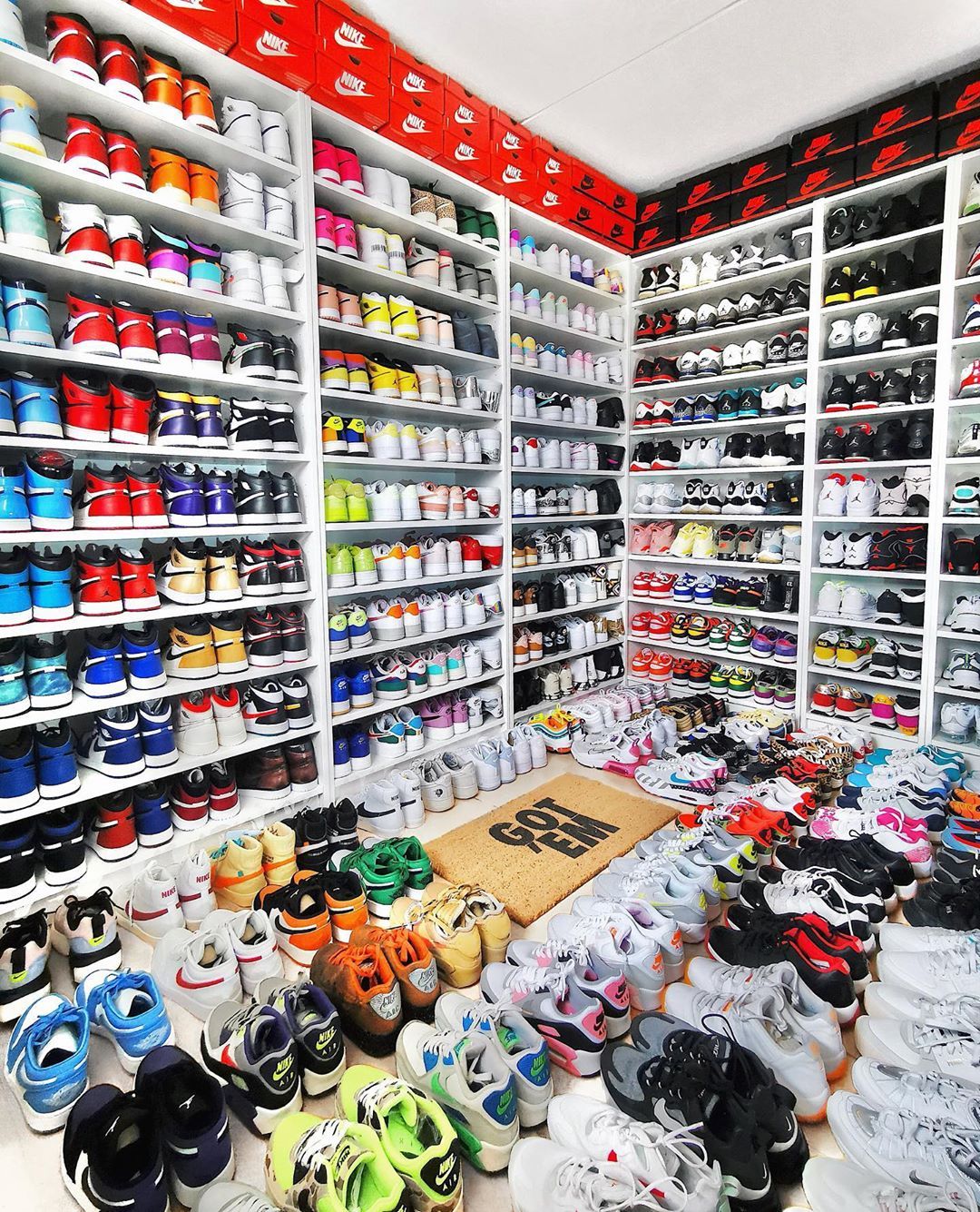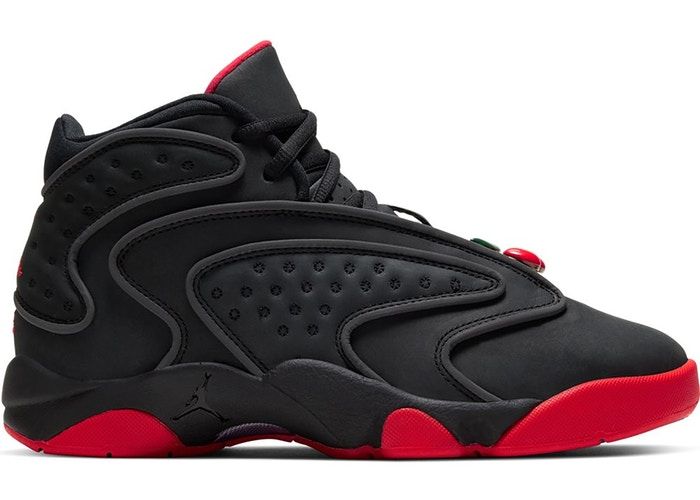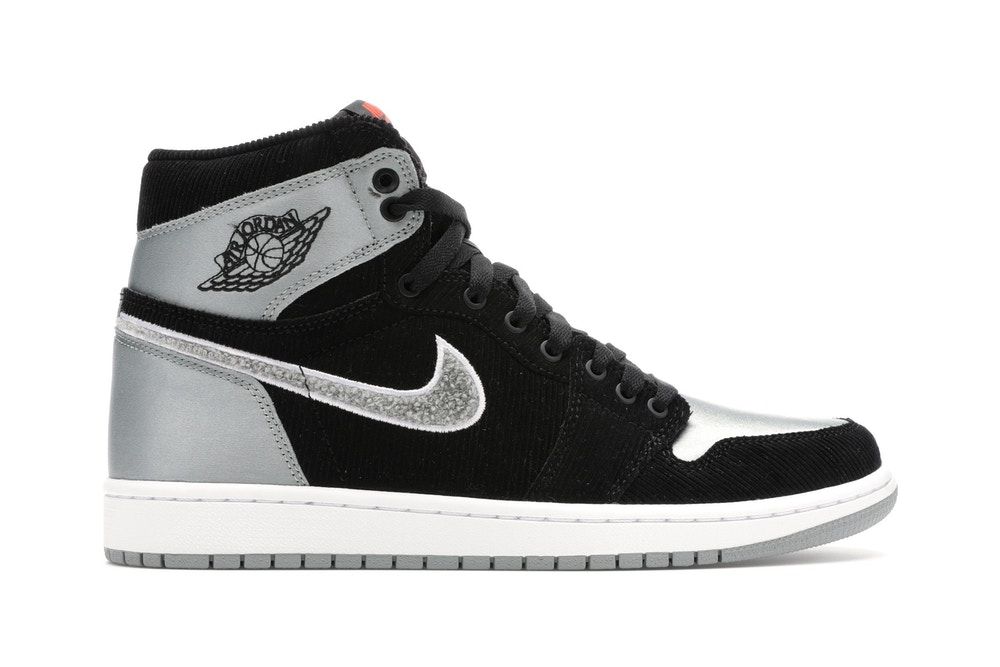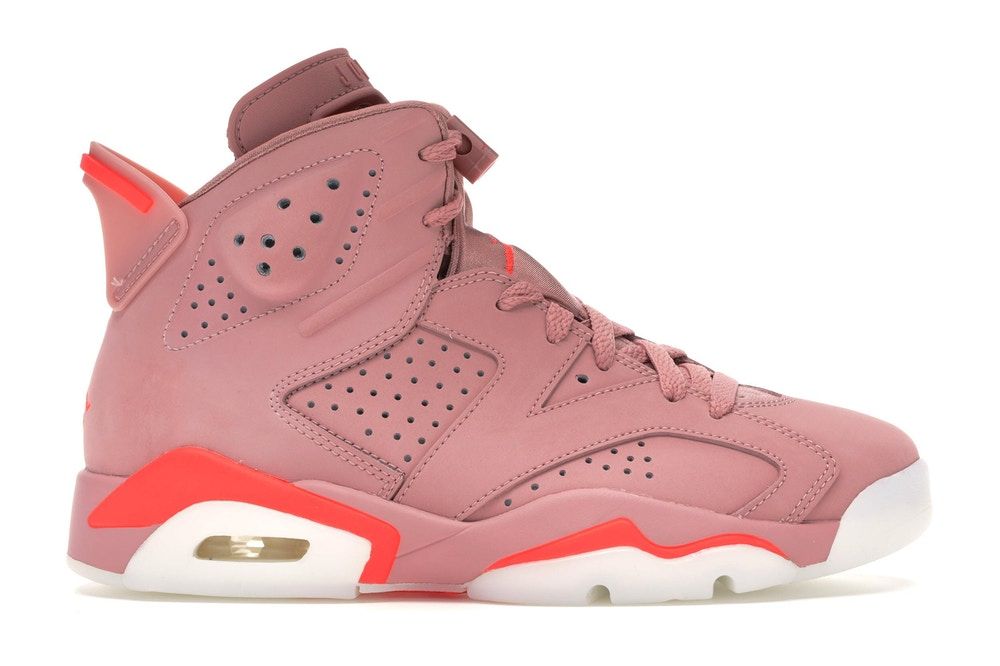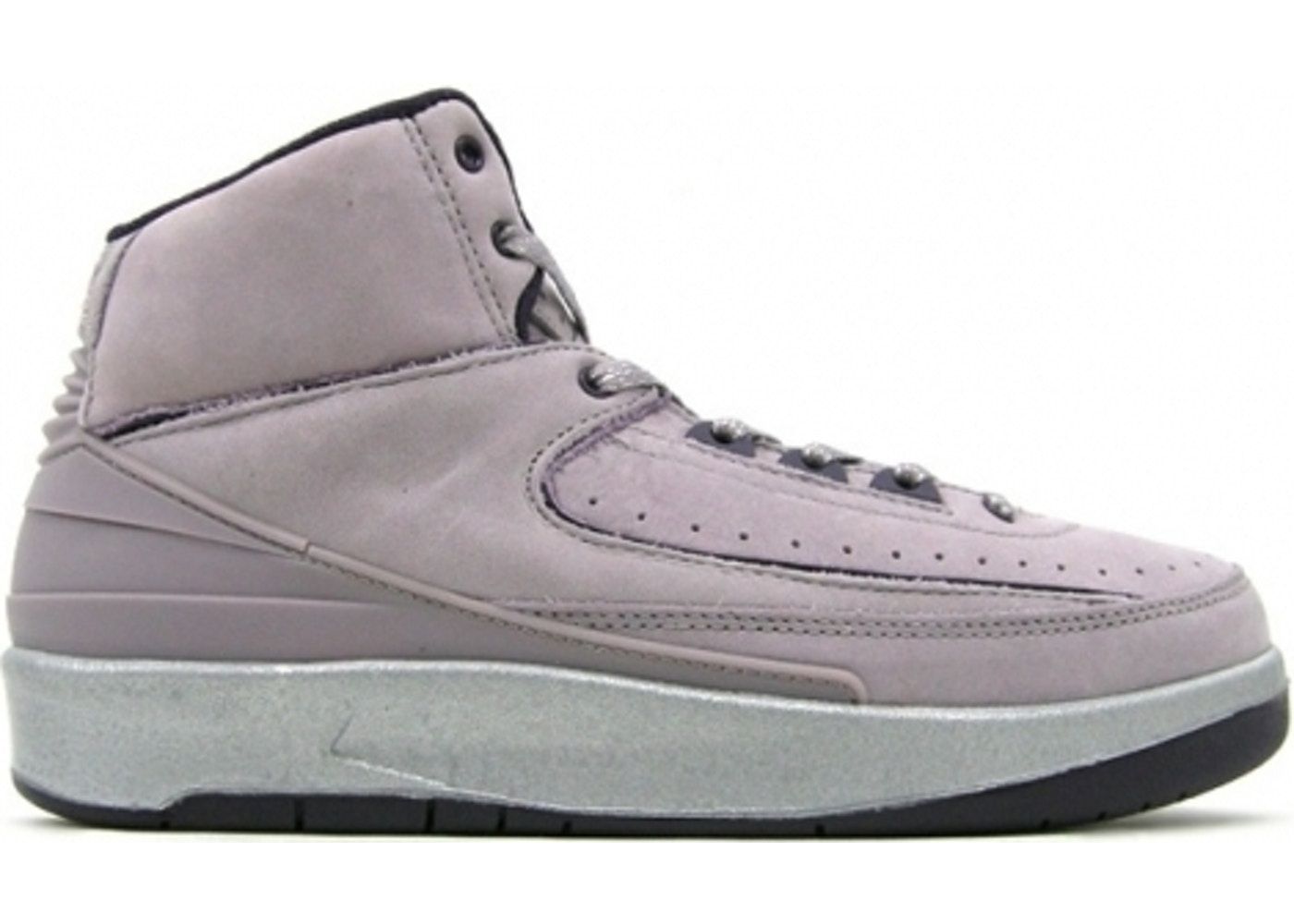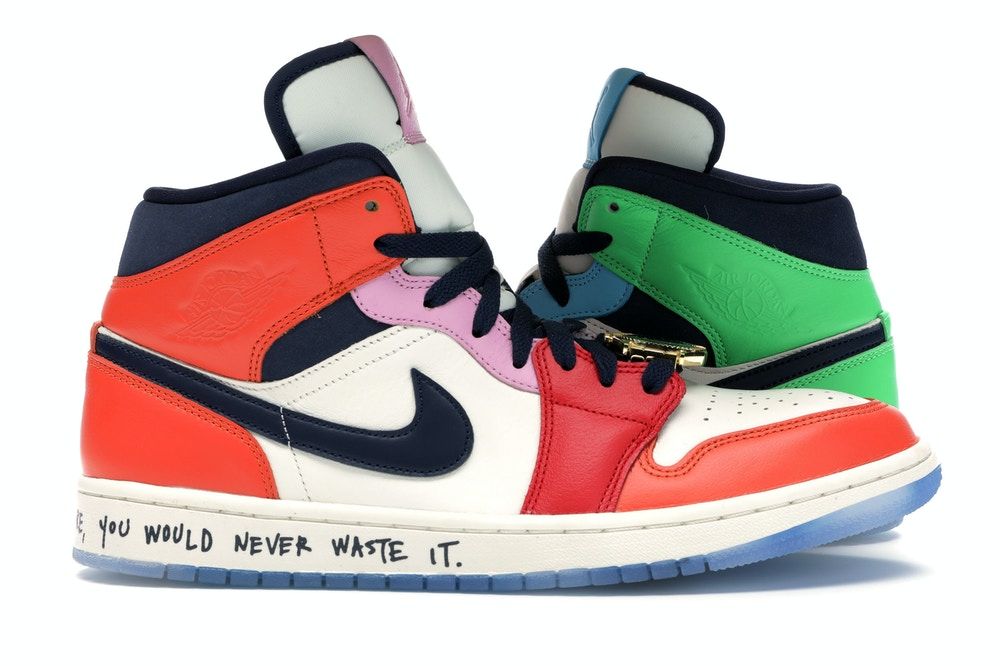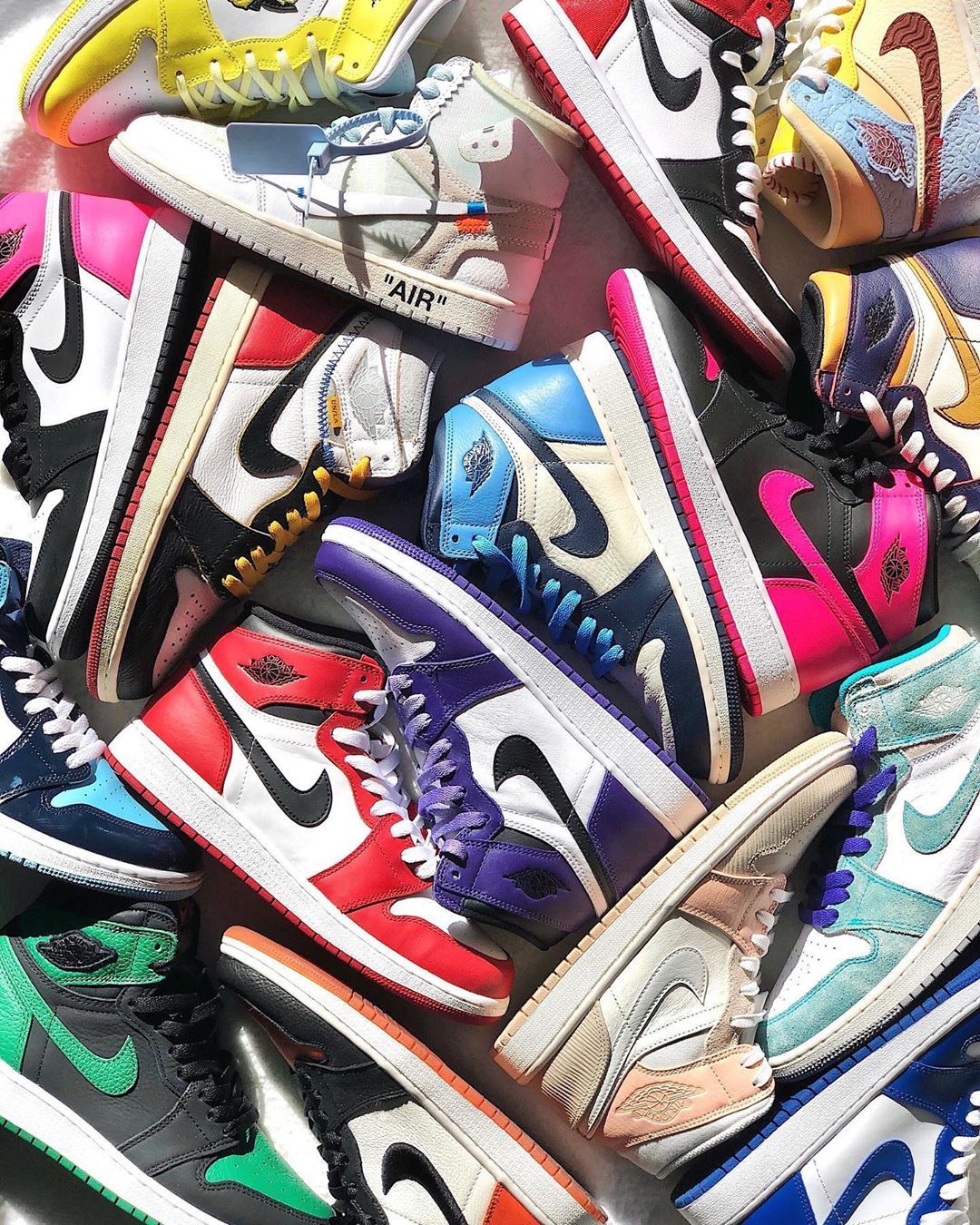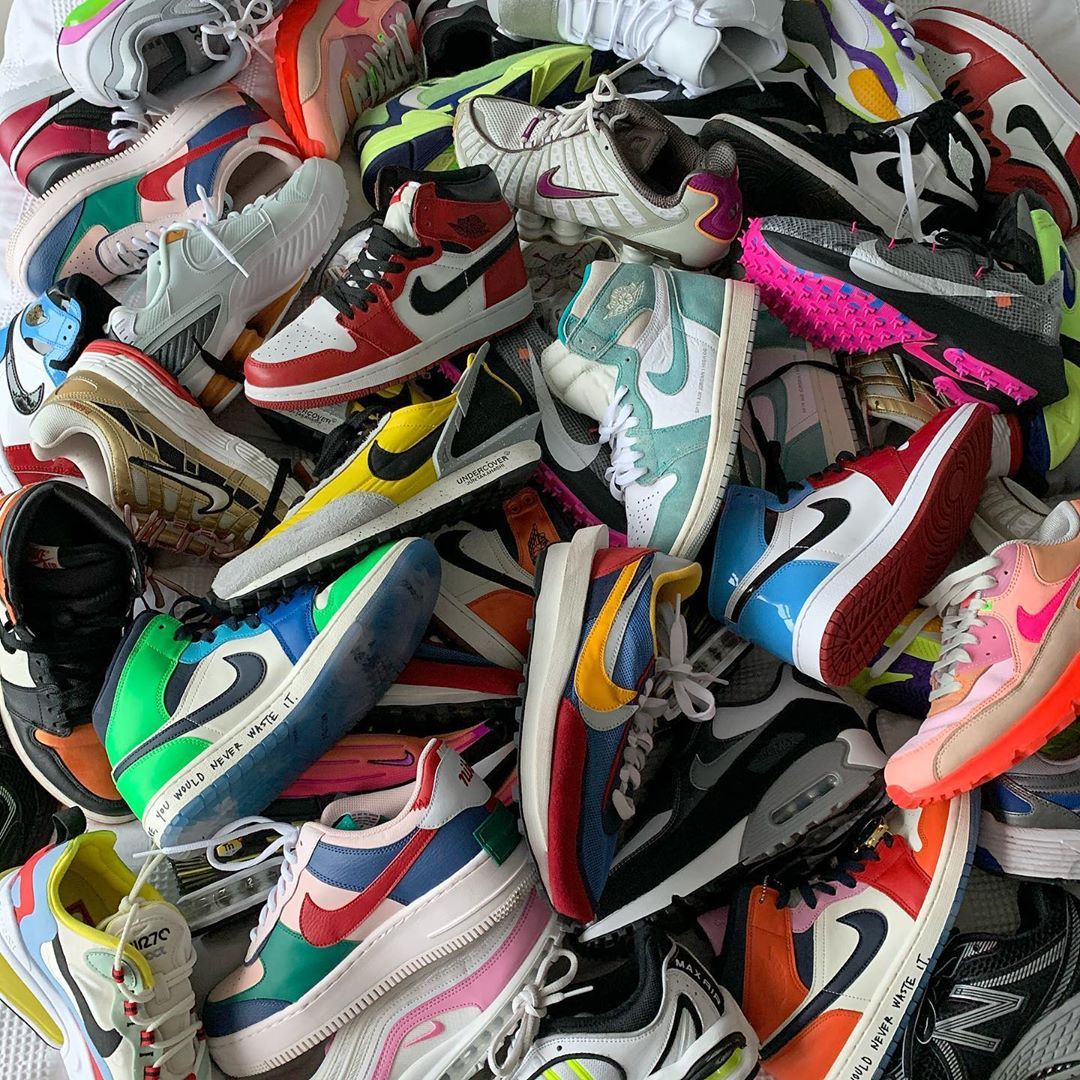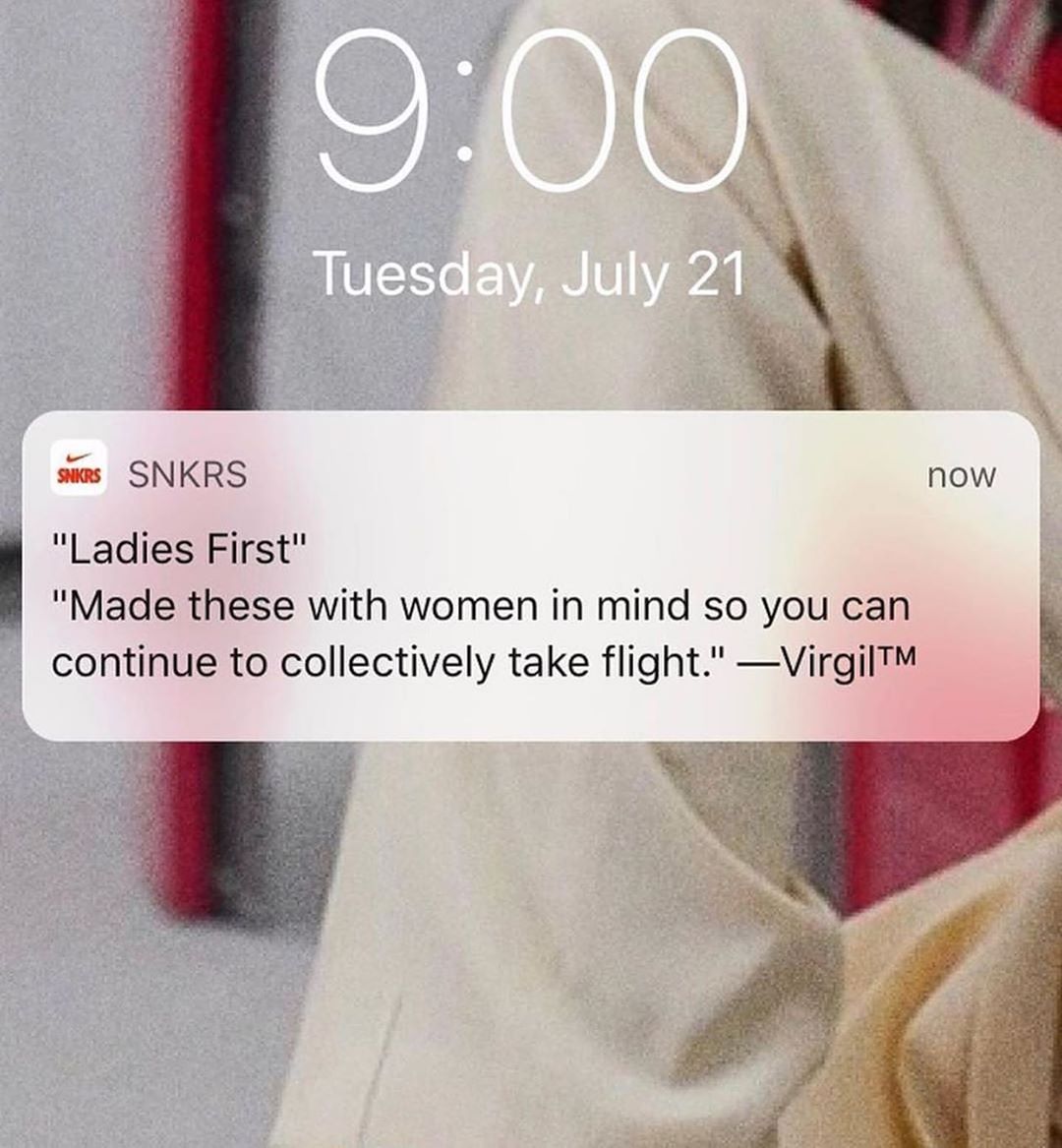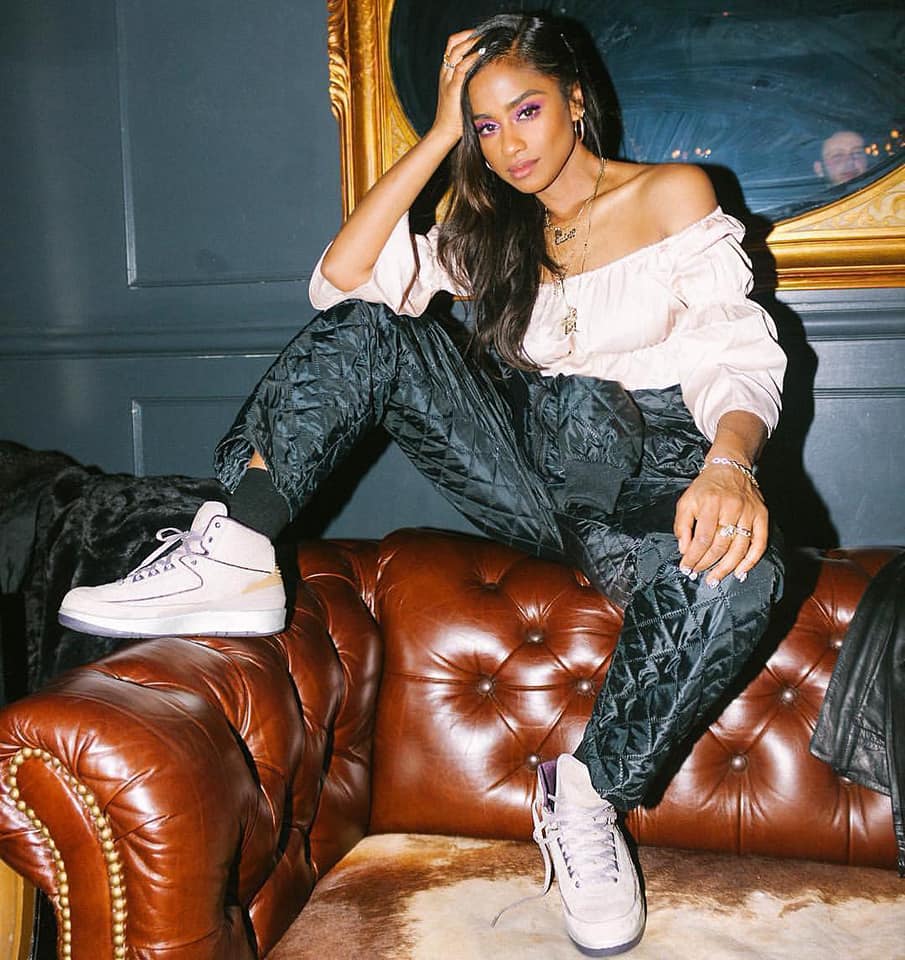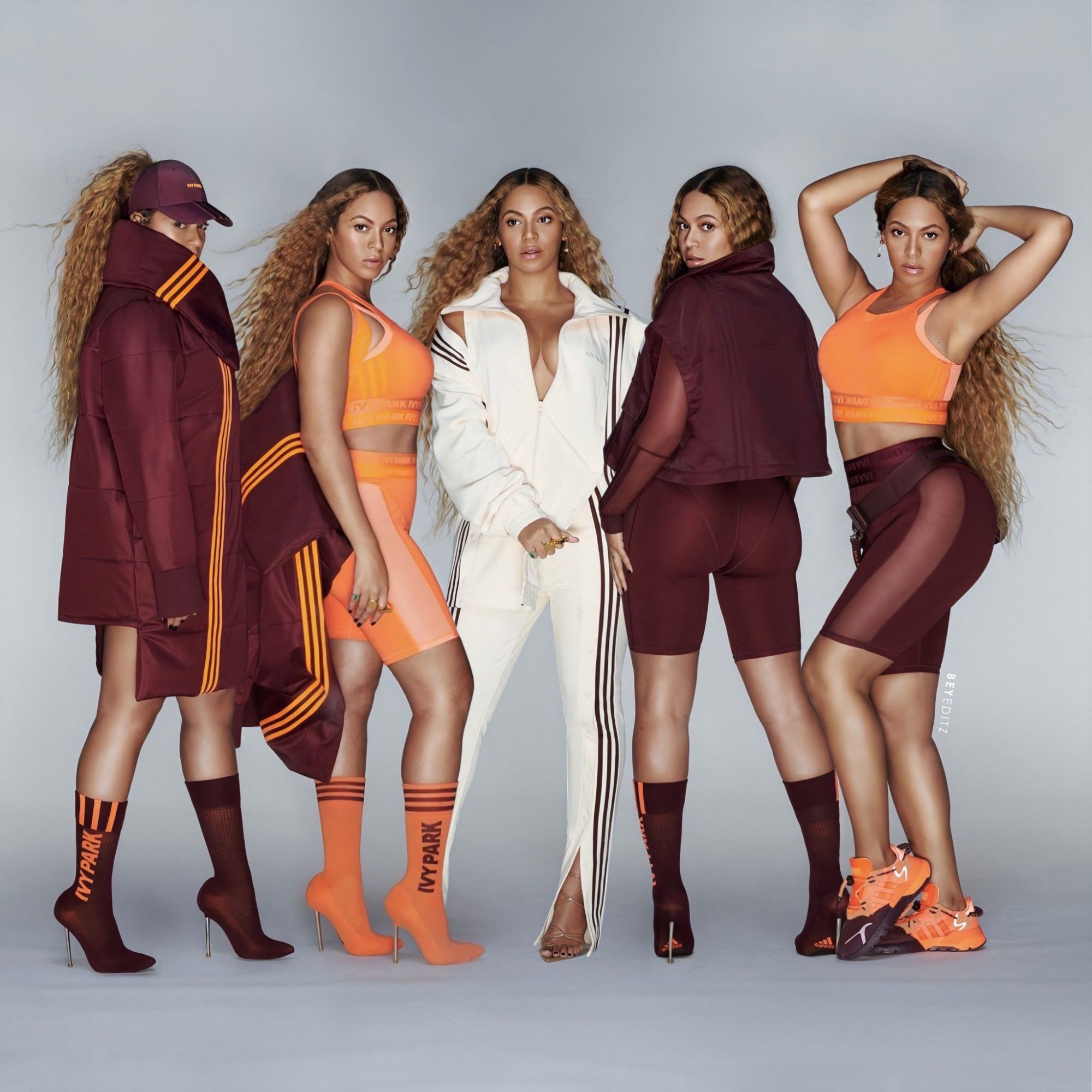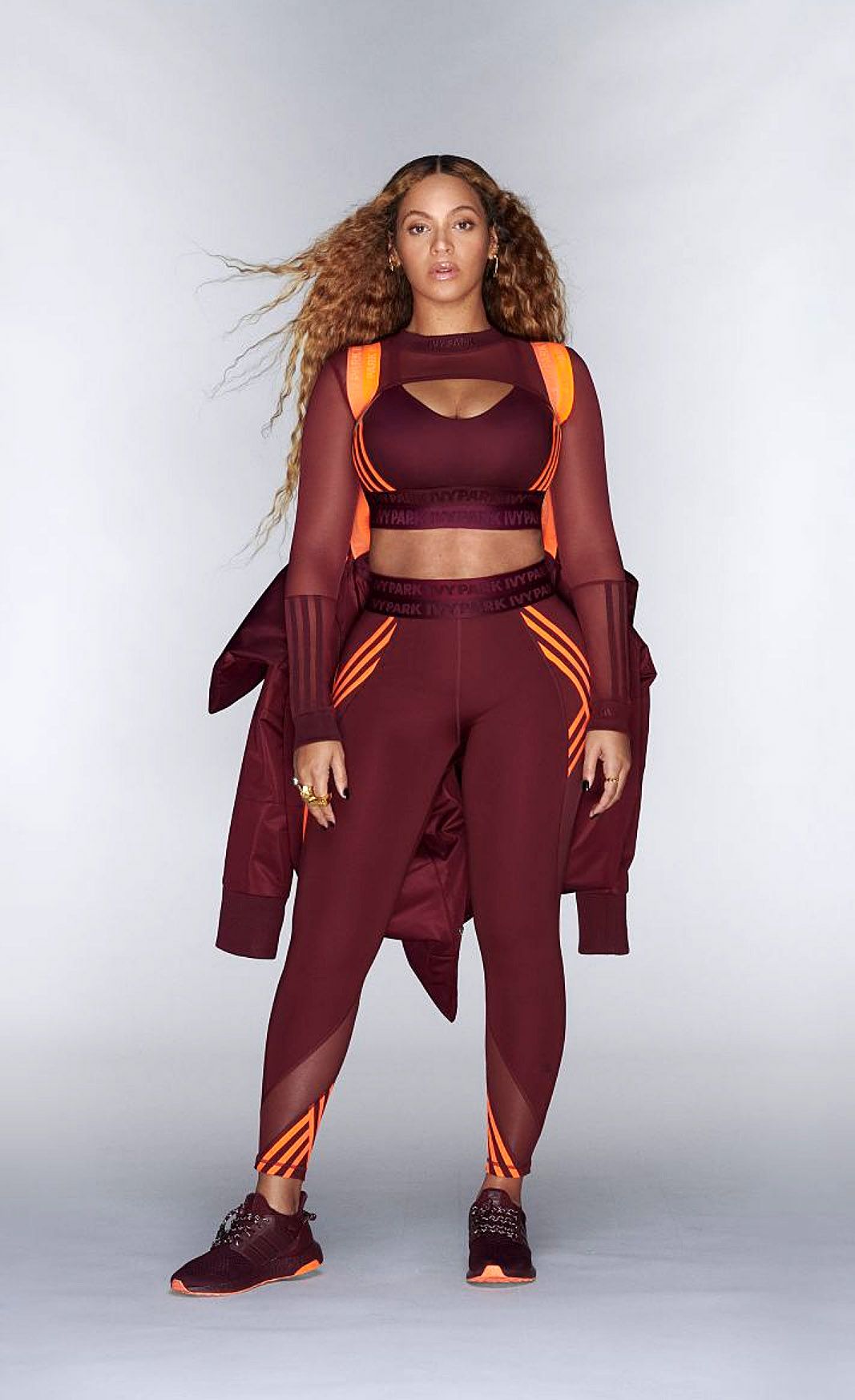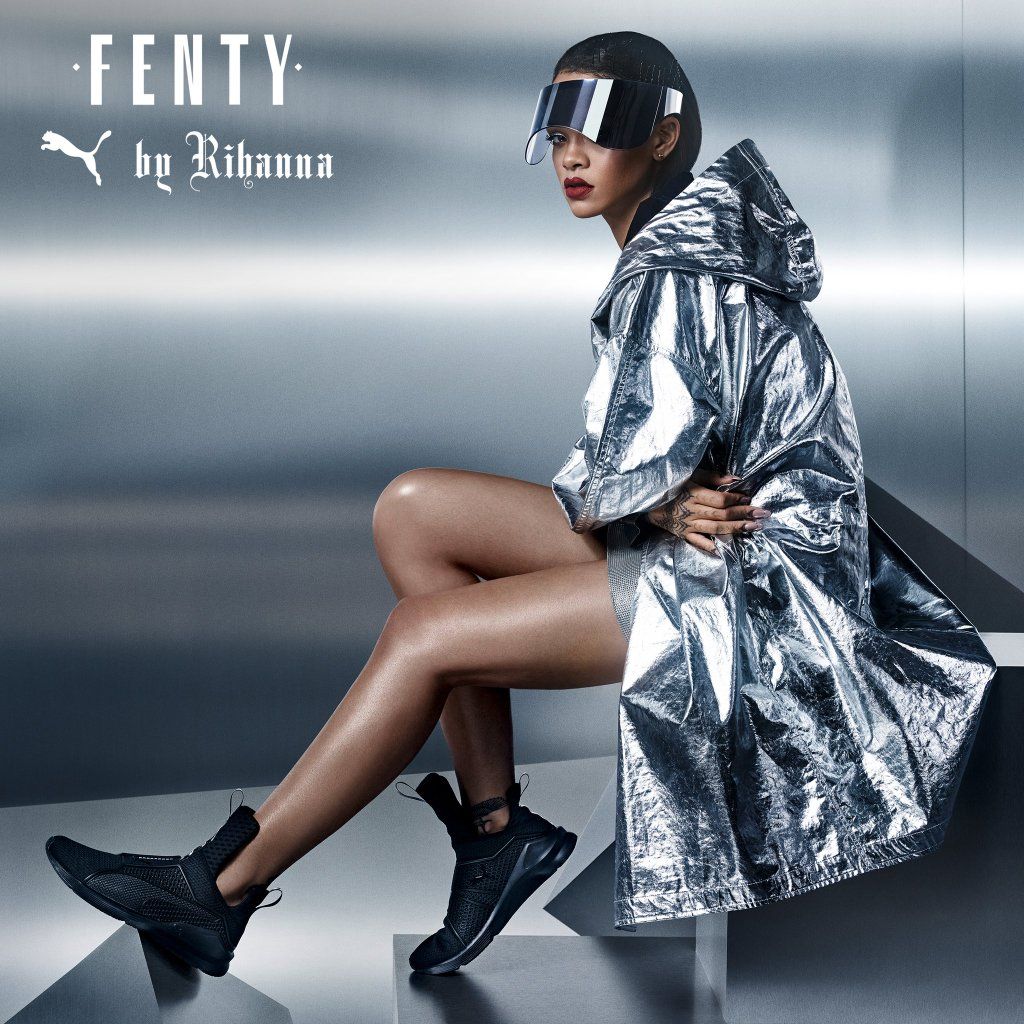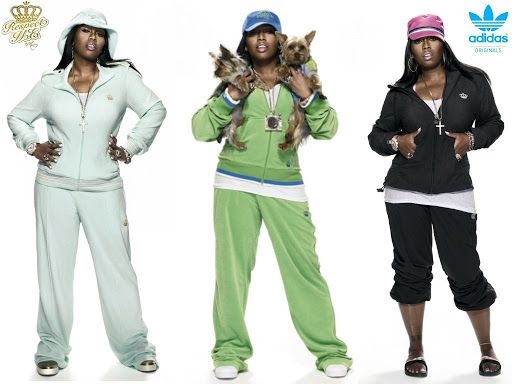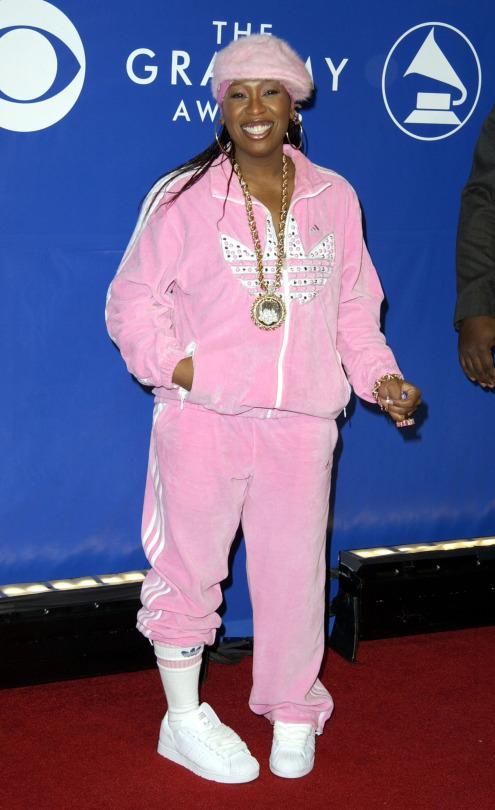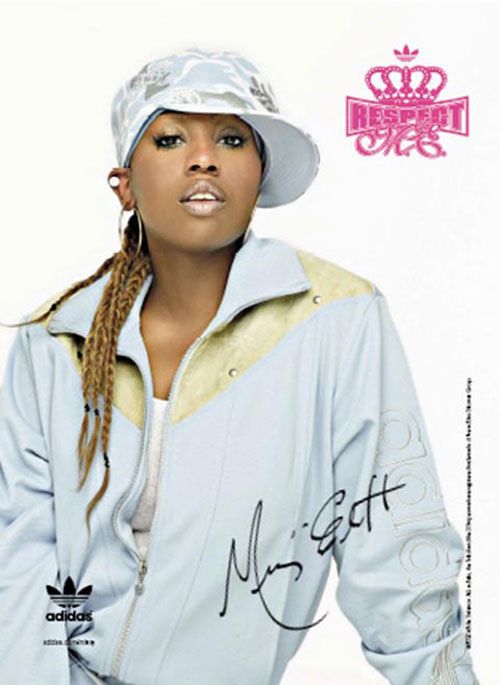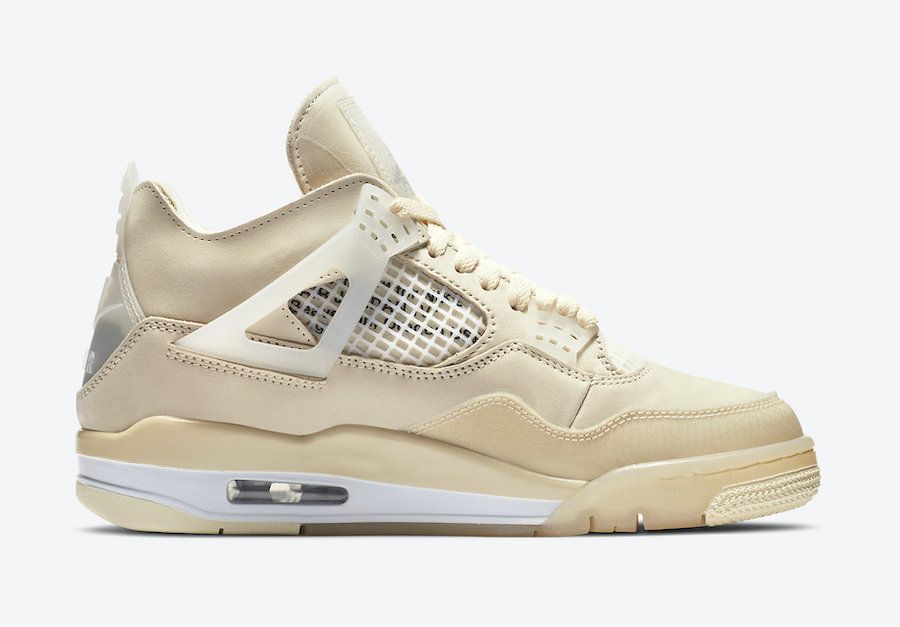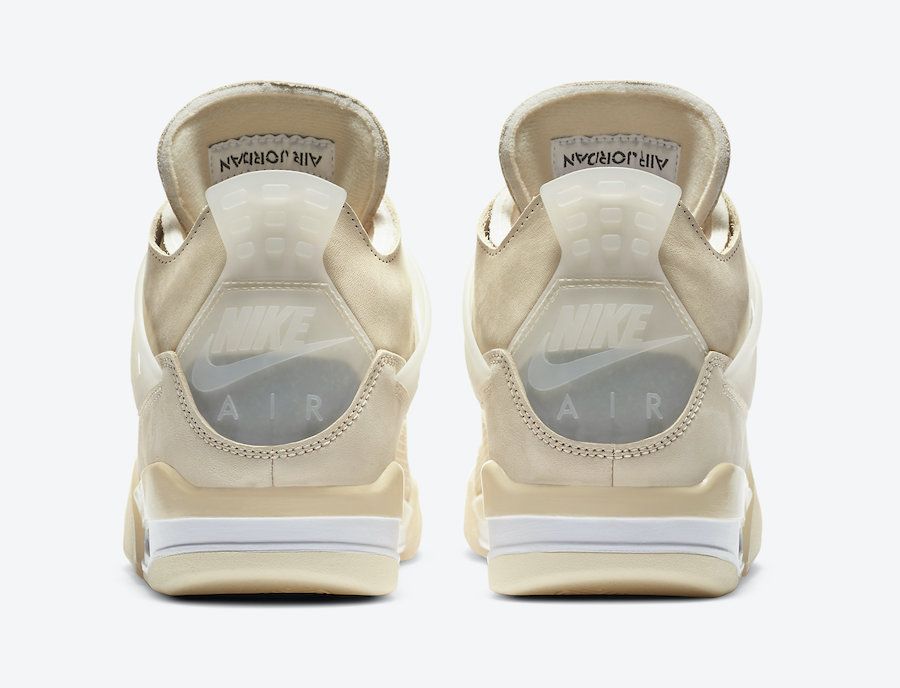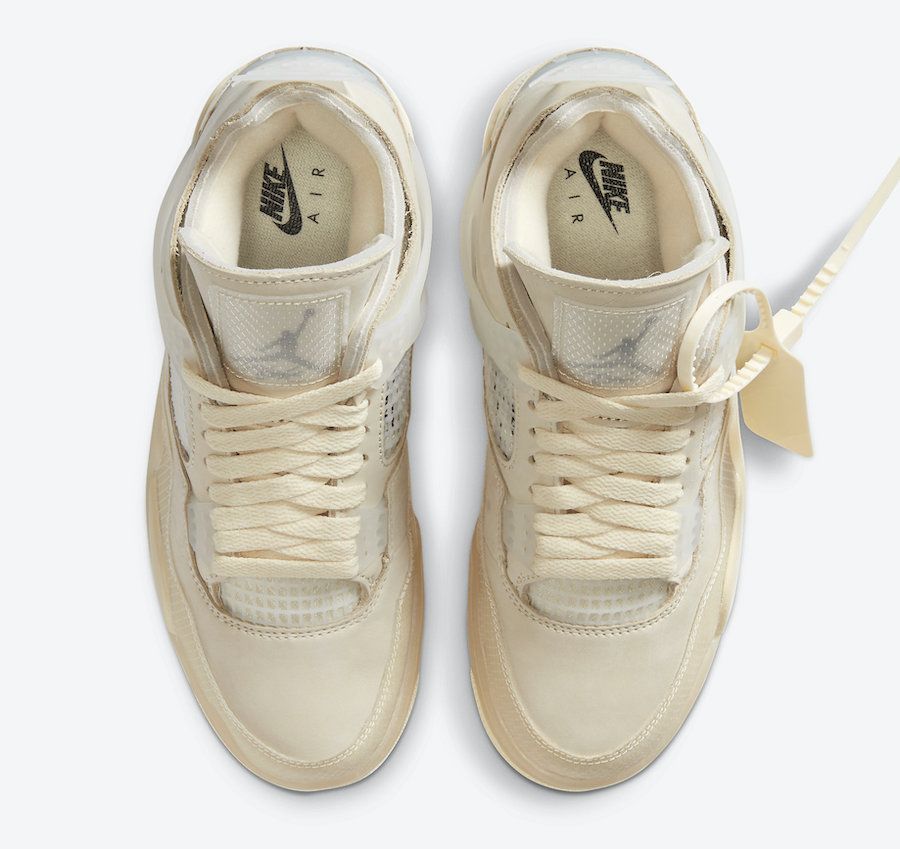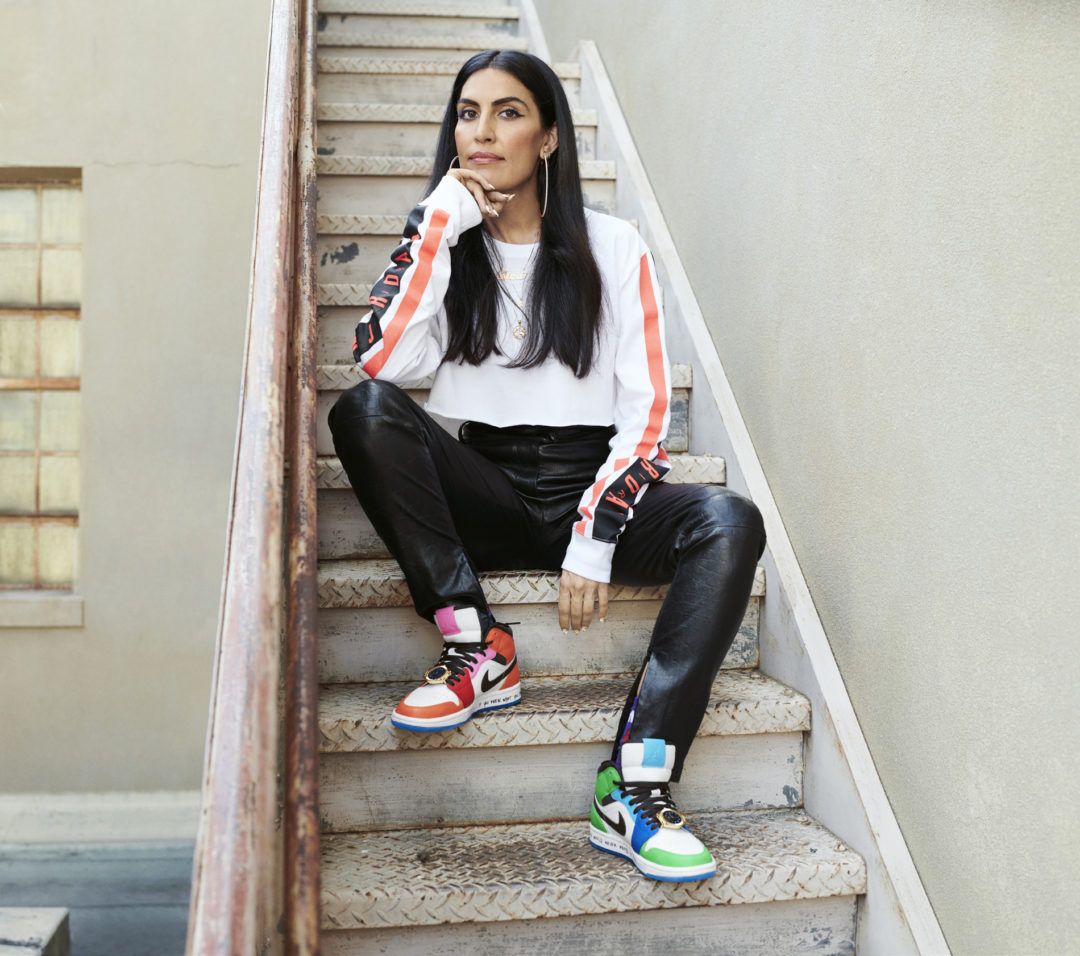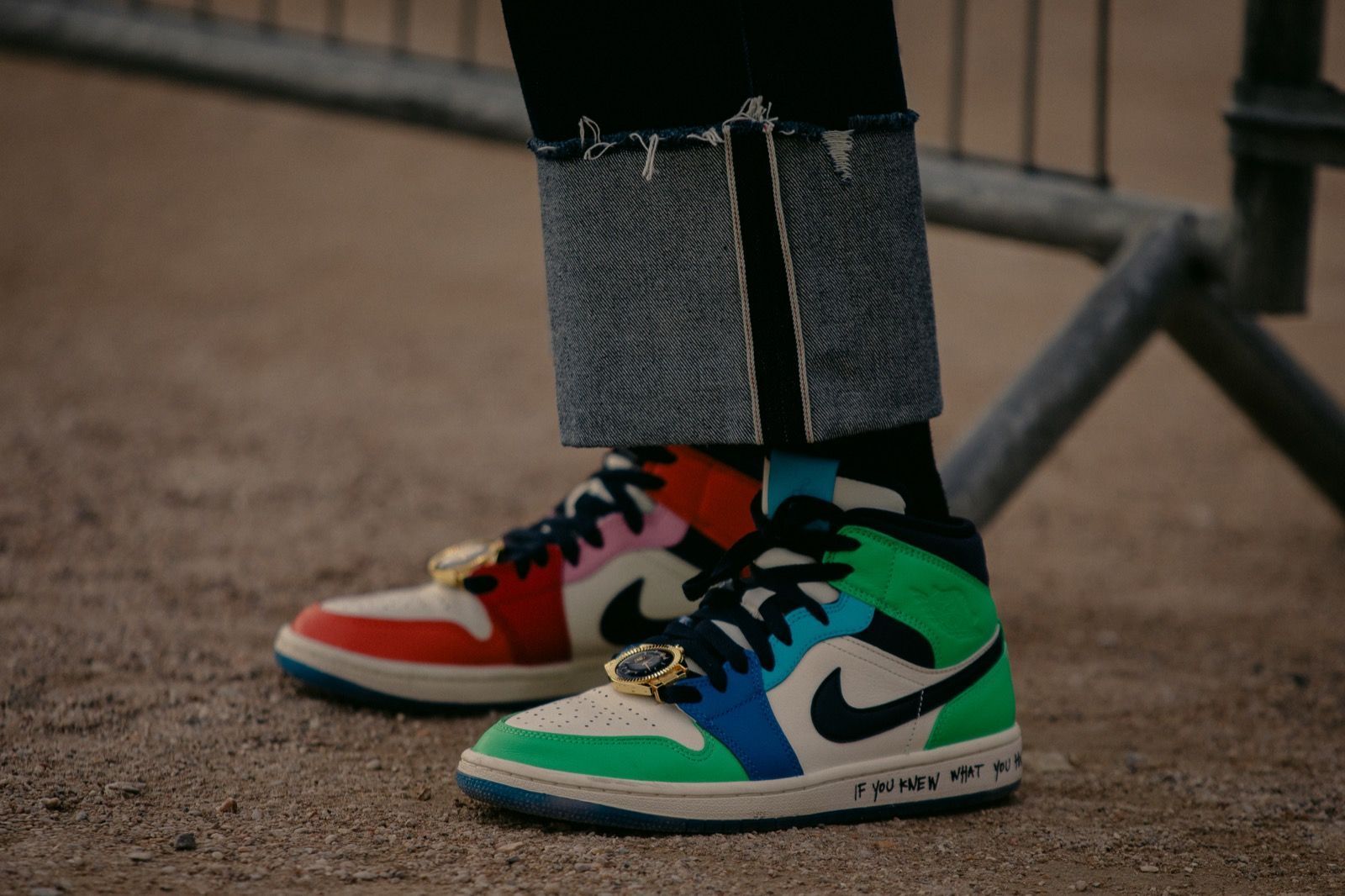
Is a big-hype woman release enough to recover from years of injustice and undisputed pink? The sneaker game is a place for women too
Among all the hype, lost raffles, desperate purchase attempts through the SNKRS app and crazy resell prices, the recent release of the Air Jordan IV Off-White conquers a place as one of the most awaited and exclusive releases of 2020.
But there is something missing. Maybe we didn't spend much time thinking about the fact that the release was a woman exclusive.
"Ladies First - Made these with women in mind so you can continue to collectively take flight- Virgil"
This was the notification that appeared on the SNKRS app before the launch of the silhouette. The message shared by Virgil Abloh highlights the brand's decision to model the Air Jordan IV on the W (women) size scale, and this inevitably adds a layer of difficulty in the purchase of the bigger sizes.
We all know that the universe of sneakers is a men's club and the releases dedicated to women boast a sad story of pink, materials that are anything but premium, questionable silhouettes and details. But do women really want exclusive releases, different from those for men and customized sizes, that are actually misleading?
The troubled history of women's sneakers
Collaborations like those of Missy Elliott and Beyoncé with adidas or Rihanna with Puma, have perhaps not been able to bring any big change or innovation for women within the market, despite the great resonance.
The first attempt for Jordan Brand was made in 2010 when the videomaker Vashtie Kola designed an Air Jordan II, becoming the first non-athlete woman to collaborate with the well-known brand.
From there, the more recent collaborations with Aleali May and Melody Ehsani - who over the years had already collaborated many times with Reebok - focused the spotlight on the female presence in the world of sneakers, opening a glimmer of timid light and hope for the sneaker fans scattered around the world.
It is questionable whether the focus on the female universe is happening right now. Certainly in recent years the concept of female empowerment has become increasingly central, making it impossible for brands not to take a position. But against the background of social issues, the economic element certainly appears: women's sneakers become a profitable business, exceeding the men's and children's segments, with an increase in sales in 2017 of 37% according to data collected by the NPD Group Inc.
The offer of the different brands over the years perhaps finally managed to meet the needs and the real demand of the female audience. It is important to highlight that the narrow circle of women's sneakerheads - the same goes for men - does not represent the entire market, it does not reflect their needs and real preferences.
Sneaker enthusiasts do not make the market, but they certainly have the power to influence it. Many times over the last few years, brands showed that they care about the ideas of these opinion leaders and that they model their offer based on their preferences.
Their purchase choices are bound and dictated by the major brands in the industry, but at the same time they maintain an autonomy that makes them the ideal testers. Through limited releases, brands have the opportunity to understand what the final consumer wants, what to release in the form of a general release for the next 24 months, or even more.
At the basis of the doubts about the effectiveness of the limited releases and the real value of sneakerhead/opinion leader for brands, however, many unsolved questions remain. Wouldn't it be simpler to have a single size chart, obviously wider, and for women to have the possibility to buy the same sneakers that men can buy? Offering a product that is once again different, albeit coveted and inaccessible to the much privileged male audience, keeps highlighting a rift within the market and the impossibility for women to choose what to wear.




















































